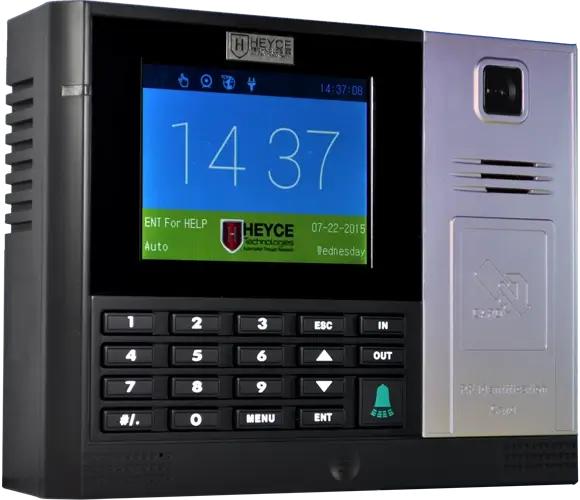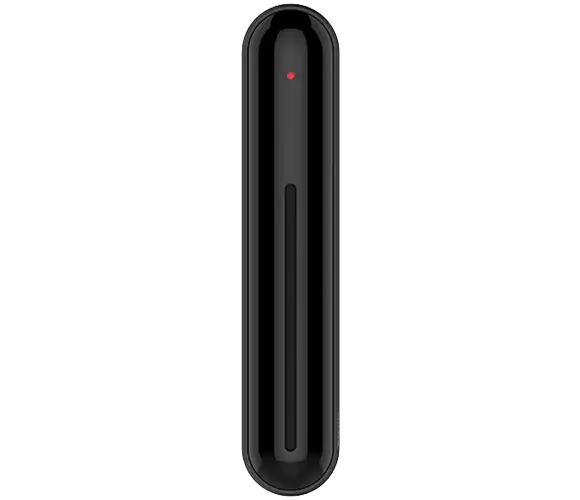- HOME
- PRODUCTS
- SOLUTIONS
- SIRA Certified CCTV
- Mobile Attendance APP
- Payroll Software
- Attendance Management
- Cloud Attendance Solutions
- Access Control Management
- Automatic Parking Barrier
- User Activity Monitoring
- Employee Productivity
- Investigate Employees
- Deter Insider Threats
- Analytics & Monitoring
- Cyber Safety
- Cloud Anti-Virus Software
- COMPANY
- CONTACTS
With over two decades of industry experience, HEYCE manufactures RFID and smart card based innovative smart card reader access control systems to strengthen physical access control security. Our driving force remains the trust placed in our products and solutions by all industry verticals including government agencies, semi-government, banks, manufacturing industries, automobiles, police, military, armed forces, airlines, telecommunications, shipping, hospitals, real estate, service providers, hotels, system integrators, to name a few. With a wide range selection from high frequency, multi-identification technology and contactless smart card reader technology, HEYCE continually strives to meet your crucial requirements for door security, parking and gate access control.

- Mifare Card Reader
- Time Attendance & Access Control
- 4G, ADSL, WiFi Communication
Learn More
- RFID Card Reader
- HID, Mifare Card Systems
- Proximity Card Readers
Learn MorePhysical Access Control
Physical security defines security methods that are planned to deny unauthorized access to facilities, equipment, and resources, and to protect personnel and property from damage or harm. The advanced world of physical access control is continually evolving. Keeping the access control design modernized with changes in functionality and compliant with security requirements can be an overwhelming task. HEYCE access control products and solutions aid in efficient migration to achieve the new compliance requirements with minimal impact on the resources.
In our effort to share information on the available physical access control security technology, we have listed different forms of card access control card reader techniques in the subsequent tabs.
The primary types of smart cardsare contact and contactless smart card readers. Both carry an embedded microprocessor with memory. The main difference of smart cards with proximity cards is that the microchip in the proximity card has only one function: to provide the card reader, like cardax, with the card's identification number. Smart cards are much advanced with the processor on the smart card containing an embedded operating system. The smart cards can handle multiple applications such as a storing cash information, working as a pre-paid membership card, or an access control card.
The difference between the two types of smart cards is the method with which the microprocessor on the card communicates with readers. A contact smart card has eight or more contact points, which must physically touch the contacts on the card reader, like cardax, to transmit information. Since contact cards must be inserted into cardax card readers carefully in the proper direction, the speed and convenience of such a transaction is not usually convenient for most access control applications. The use of contact smart cards as physical access control is limited mostly to parking access control requirements when payment data is stored in card memory, and when the speed of transactions is not as significant.
A contactless smart carduses the same radio signal technology as the proximity card, with the exception of the frequency band used. Contactless RF smart cards use a higher frequency of 13.56 MHz much higher than the proximity cards’ frequency of 125 kHz. The use of higher frequency allows efficient transfer of more data, and communication with several cards simultaneously. A contactless card does not have to touch the reader or even be taken out of a wallet or purse. Most access control systems deployed today only read serial numbers of contactless smart cards. The available memory in the card remains unutilized. Such unused card memory may be used for storing biometric data (i.e. fingerprint templates) of a user. In such a scenario a biometric reader first reads the template on the card and then compares it to the finger (hand, eye, etc.) presented by the user. The main benefit of this method is that the biometric data of users do not have to be distributed and stored in the memory of controllers or card readers. This method simplifies the system and reduces memory requirements.
Proximity cards are commonly used card access control readers. Proximity card readers radiate a 1" to 20" electrical field around itself. When a proximity card is presented within this electrical field, the reader's electrical field stimulates a coil in the card. The coil charges a capacitor and in turn powers an integrated circuit (IC). The integrated circuit outputs the card number to the coil, which transmits it to the card reader. The card reader in turn sends this information to a door controller module, which is responsible to give the appropriate response in terms of authorization, alarm or any functions that are predefined with use of the card presented. A common proximity format follows 26-bit Wiegand card reader protocol.
Magnetic stripe reader technology derives its name due to the use of the stripe of magnetic oxide tape that is bonded on the magnetic stripe card. There are three tracks of data on the magnetic stripe. Typically, the data on each of the tracks follows a specific encoding standard. However, it is possible to encode any format on any track. A magnetic stripe card is cheaper when compared to other card technologies. It also has a simplified programming. The magnetic stripe holds more data than a barcode can contain in the same space. While a magnetic stripe is more difficult to generate than a bar code, the technology for reading and encoding data on a magnetic stripe is widespread and easy to acquire. The main disadvantage of magnetic stripe reader technology is that it is susceptible to misreads, card wear, and data corruption. These magnetic cards are also susceptible to various forms of skimming where external devices are placed over the reader to intercept the data read by magnetic stripe readers.
Wiegand card reader technology is a patented technology using embedded ferromagnetic wires strategically placed to generate a unique pattern that produces the identification number. Like magnetic stripe reader or barcode reader technology, this card must be swiped through a reader to be read. Unlike the other technologies, the identification media is embedded in the card and not susceptible to wear. This technology once gained popularity because it is difficult to duplicate, creating a high acuity of security. This technology is being replaced by proximity cards, however, because of the limited source of supply, the relatively better tamper resistance of proximity card readers, and the convenience of the touch-less functionality in proximity card readers. Proximity card readers are many a times referred to as "Wiegand card readers". However, the proximity card readers no longer use the Wiegand effect. Proximity technology retains the Wiegand upstream data so that the new readers are compatible with older systems.

